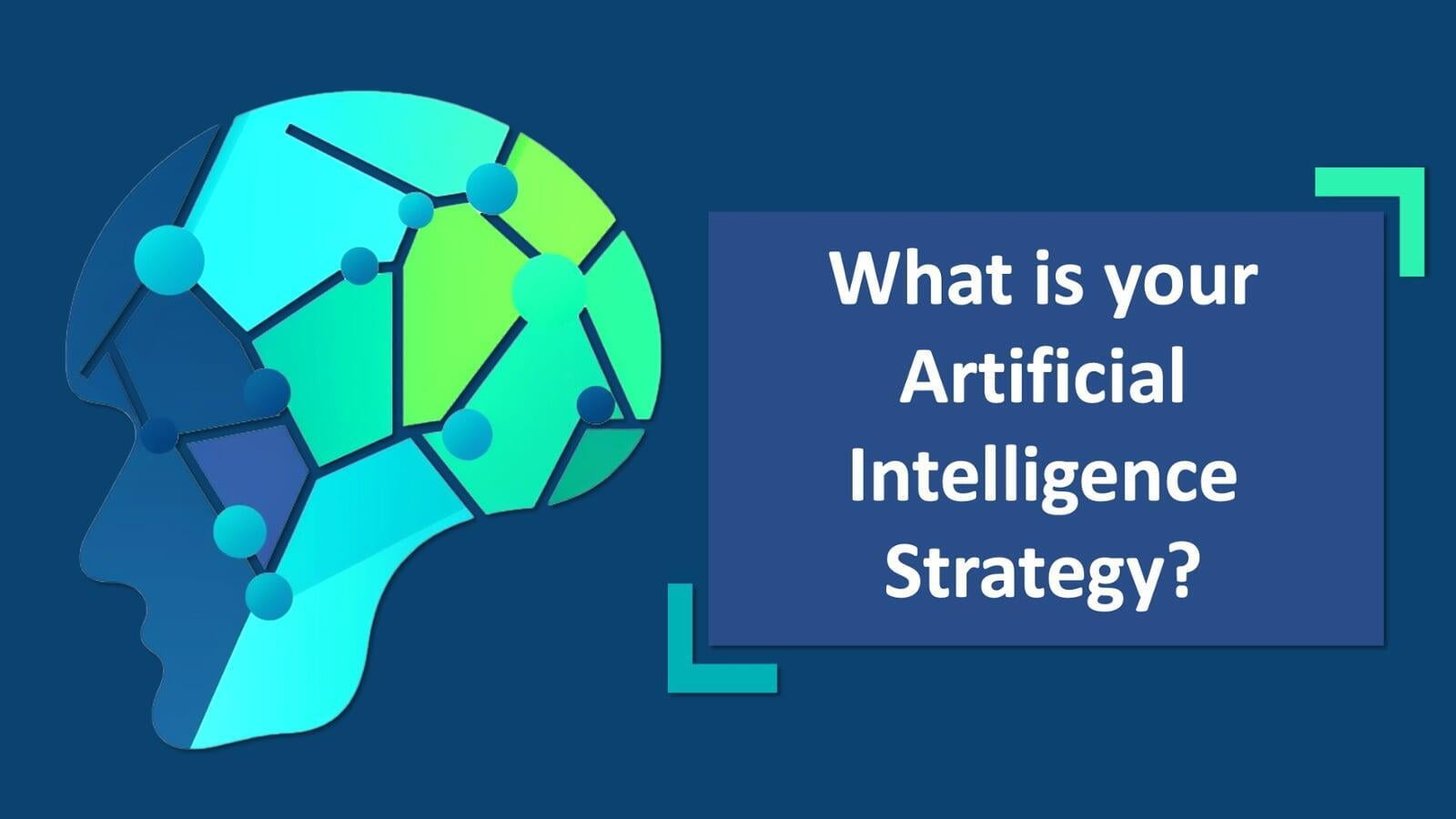Outdated Software: The Hidden Enemy Of Your AI Strategy

Table of Contents
Performance Bottlenecks Caused by Outdated Software
Legacy systems and inefficient software are notorious for creating major performance bottlenecks in AI initiatives. Modern AI algorithms require immense computational power and the ability to process massive datasets – capabilities often lacking in outdated software architectures. This leads to several critical issues:
- Slower processing speeds impacting model training time: Training complex AI models can already take days or even weeks. Outdated software significantly extends this timeframe, delaying the deployment of crucial AI applications. This directly impacts your time-to-market and competitive advantage.
- Incompatibility with modern AI frameworks and libraries: Modern AI relies on cutting-edge frameworks like TensorFlow, PyTorch, and scikit-learn. Outdated software often lacks the necessary APIs and compatibility to integrate seamlessly with these essential tools. This necessitates costly workarounds and custom development.
- Increased latency in AI applications and predictions: Slow processing translates to longer wait times for AI-powered applications, negatively impacting user experience and potentially undermining the value proposition of your AI solutions. Imagine an AI-powered customer service chatbot struggling to respond promptly due to outdated infrastructure – it's a recipe for frustrated users.
- Higher infrastructure costs due to inefficient resource utilization: Outdated software often requires more computational resources to achieve the same results as modern, optimized software. This translates to higher energy consumption, increased server costs, and ultimately, a larger financial burden.
Security Risks Associated with Outdated Software and AI
The security risks associated with outdated software are significantly amplified in the context of AI. AI systems often handle sensitive data, and a breach can have catastrophic consequences. Using old software dramatically increases your vulnerability:
- Exploitable vulnerabilities leading to data breaches: Outdated software is a prime target for cyberattacks. Lack of security patches and updates leave gaping holes for hackers to exploit, potentially leading to the exposure of valuable AI models and sensitive customer data.
- Lack of security patches and updates: Regular security updates are crucial for patching vulnerabilities. Outdated software often lacks these updates, leaving your AI infrastructure exposed to the latest threats.
- Compliance issues and regulatory penalties: Many industries are subject to stringent data privacy regulations (like GDPR). Using outdated software that fails to meet these standards can lead to hefty fines and legal repercussions.
- Risk of model poisoning or manipulation: Attackers can exploit vulnerabilities in outdated systems to tamper with AI models, leading to biased or inaccurate predictions. This can have serious consequences, especially in critical applications like healthcare or finance.
Integration Challenges with Modern AI Tools
Integrating outdated software with modern AI tools and platforms presents significant challenges. The incompatibility between legacy systems and cutting-edge AI technologies creates friction and delays:
- API incompatibility and limited interoperability: Outdated systems may lack the APIs required for seamless integration with modern AI platforms. This necessitates extensive custom development, increasing project costs and timelines.
- Difficulties in data migration and transformation: Moving data from outdated systems to modern AI platforms can be a complex and time-consuming process. Data format inconsistencies and legacy database structures can create significant obstacles.
- Increased development time and complexity: Bridging the gap between old and new systems requires significant developer effort and expertise, leading to extended development cycles and increased project costs.
- Higher costs associated with custom integration efforts: The need for custom integrations dramatically increases project expenses, making your AI investment less efficient and potentially less profitable.
The Impact of Outdated Software on AI ROI
The financial implications of using outdated software for AI initiatives are substantial. The reduced efficiency and increased costs directly impact your return on investment (ROI):
- Higher operational costs due to slow performance and inefficiencies: Slow processing speeds, increased resource consumption, and frequent downtime directly translate into higher operational costs.
- Increased development time leading to delayed ROI: Extended development cycles due to integration challenges and incompatibility delay the time to market for your AI applications, pushing back your ROI timeline.
- Missed opportunities due to lack of scalability and adaptability: Outdated software often struggles to scale with growing data volumes and changing business needs, limiting the potential of your AI initiatives and resulting in lost opportunities.
- Potential for project failure due to technical limitations: In extreme cases, the limitations of outdated software can lead to project failure, resulting in significant financial losses and wasted resources.
Strategies for Modernizing Your Software for AI Success
Modernizing your software infrastructure is crucial for realizing the full potential of your AI strategy. Several key steps can help you overcome the challenges of outdated software:
- Cloud migration for improved scalability and performance: Migrating your applications to the cloud offers superior scalability, performance, and cost-effectiveness, providing the necessary infrastructure for your AI initiatives.
- Software upgrades and patching: Regular software upgrades and security patching are essential to address vulnerabilities and ensure compatibility with modern AI tools.
- Implementation of modern AI platforms and frameworks: Investing in modern AI platforms and frameworks provides the tools and infrastructure necessary to build and deploy effective AI solutions.
- Investing in skilled personnel for software modernization: Recruiting or training skilled personnel capable of managing and modernizing your software infrastructure is essential for long-term success.
Conclusion
Outdated software is a significant impediment to effective AI strategies. It creates performance bottlenecks, exposes your organization to severe security risks, complicates integration with modern tools, and ultimately diminishes your return on investment. To avoid these pitfalls, it's crucial to assess your current software infrastructure and implement a comprehensive modernization plan. Don't let outdated software hinder your progress – modernize your software and unlock the full potential of your AI initiatives. Learn more about optimizing your AI strategy with a complimentary consultation: [Link to relevant resource].

Featured Posts
-
 Lich Thi Dau Thaco Cup 2025 Xem Truc Tiep O Dau Va Khi Nao
Apr 30, 2025
Lich Thi Dau Thaco Cup 2025 Xem Truc Tiep O Dau Va Khi Nao
Apr 30, 2025 -
 Russias Threat And The Escalation Of Global Military Spending
Apr 30, 2025
Russias Threat And The Escalation Of Global Military Spending
Apr 30, 2025 -
 Timberwolves Defeat Nets Edwards Dominant Performance
Apr 30, 2025
Timberwolves Defeat Nets Edwards Dominant Performance
Apr 30, 2025 -
 Chung Ket Giai Bong Da Thanh Nien Sinh Vien Tran Mo Man Day Soi Dong
Apr 30, 2025
Chung Ket Giai Bong Da Thanh Nien Sinh Vien Tran Mo Man Day Soi Dong
Apr 30, 2025 -
 Ultima Oportunidad Clases De Boxeo Edomex 72 Horas
Apr 30, 2025
Ultima Oportunidad Clases De Boxeo Edomex 72 Horas
Apr 30, 2025
